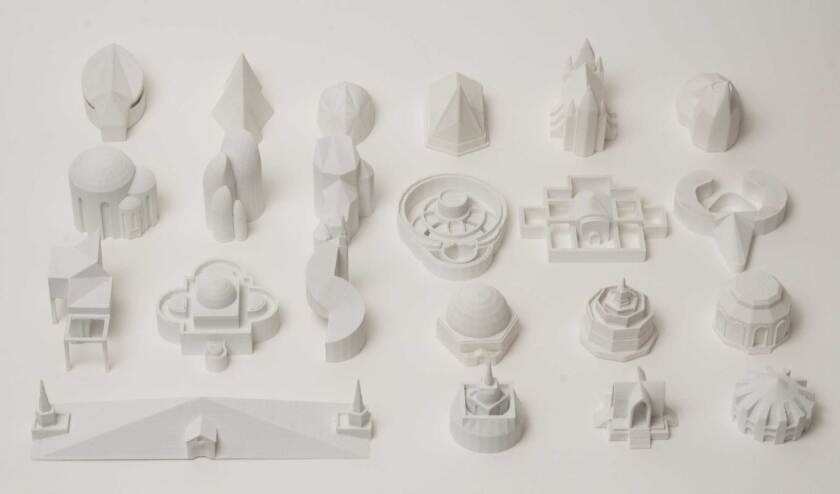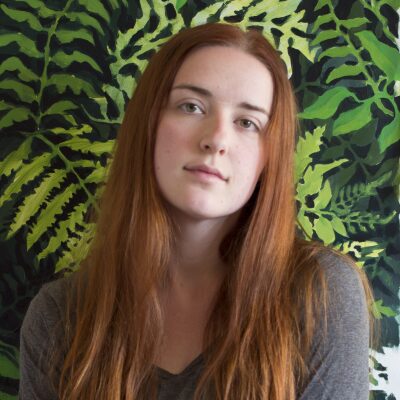Rooted in the acquisition, possibilities and failures of knowledge, Maddison Colvin's work follows through on personal, intellectual inquiries
Maddison Colvin doesn’t think of herself as a particularly creative person. Her approach to art is more methodical than intuitive; more logical than feeling. “I think for a long time until I have an idea for a project,” she said in an interview with Exponent II. “This thinking is challenging, exciting and definitely where all the fun happens.”
Once Colvin decides on the best means of executing an idea, she “transition[s] from artist to machine” in order to make it. This final step may take hundreds of hours, which Colvin works consecutively until a piece is complete. Only then is she satisfied. Despite her machine-like process for making art, Colvin recognizes that machine-like precision is an impossible—and uninteresting— objective. Embedded in her work are flaws and failures inherent to human hands.Even though Colvin invests tremendous effort in each creation, in retrospect, she tends to dislike much of her own work. This may seem discouraging, but for Colvin, making art is more about having an active mind than leaving behind a trail of beautiful artifacts.

“When I don’t make art I feel kind of mentally dead in a lot of ways,” Colvin said. “I’m not thinking as sharply, I’m not making connections as fluidly. That, for me, is what’s really satisfying about art, is feeling like I can take a thought all the way to its conclusion, or at least to a stopping point.”
Colvin was initially drawn to study art because it challenged her in ways that other subjects did not. Homeschooled to the high school level by her mother, an Army doctor, Colvin started attending community college at the age of 14. She performed well in most of her classes by memorizing material, only to forget it once she no longer needed it.

“[The material from most classes] didn’t sink in with me in any kind of meaningful way,” Colvin said, “but art was something I couldn’t just memorize. I had to really work at it and try to understand things in this deep, hard-to-communicate way, and that felt different to me. I really enjoyed that.”After earning an associate’s degree at 15, Colvin pursued studio art first at Whitworth University in Spokane, Washington, and then at BYU, where she graduated with an MFA in 2013. Following her graduate experience, Colvin participated in the Artist-in-Residence Program at the Utah Museum of Contemporary Art in Salt Lake City, while also employed as an adjunct instructor at BYU and teaching art at a charter school. Near the end of her second year after graduation, Colvin completed a visiting professorship with BYU.
As Colvin was realizing she wanted to teach full time at the university level, her husband was accepted to a PhD program in Eugene, Oregon. With few opportunities for teaching and no cohort of supportive peers when they moved, Colvin said she entered a period of stagnation in her art that lasted for about two years. Finally in 2016, she attended a two-week artist residency at the Sitka Center for Art and Ecology that provided concentrated, dedicated time to work on art and receive critical feedback from other artists.
“It really felt like a jolt that got me moving again and gave me so much more momentum,” Colvin said. “It has led to the past two years of concentrated work and feeling like I’m part of a community of artists doing worthwhile things.”
In fact, Colvin has participated in nine exhibitions since her first child was born in October 2017. A driven artist and intellectual engaged in many fields, she works as a graphic designer, part-time instructor at a community college and freelance illustrator; she also helps run an art space in Eugene called Tropical Contemporary.
Much of Colvin’s work involves cataloguing ideas and creating models for understanding the world. One of her current projects explores the failure of documentation, and how attempts to document a subject fail to capture the experience of engaging it in person. “Basically, documentation is trying to take a 3D object—in this case, a plant—and render it readable or legible and it can’t do that,” Colvin said. “If you draw the front of the plant you don’t get the back of the plant. If you pull a plant out of the ground and dry it and put it in a book, you’re taking all the life and growth out of it and you’re freezing it in a moment in time.”

Fascinated by the concept that a landscape must in a sense be destroyed in order to make it hold still, Colvin chose to pursue her exploration of this topic using a scanner. A scanner is merciless in how it crushes the plant, Colvin said, while also making an image of the plant.
“For me the scanning isn’t so much about wanting to actually document the landscape as it is messing with how futile it is to even try,” Colvin said in a 2018 video. “Not only how futile, but kind of how self-destructive it is.” This project follows through on one of multiple lines of inquiry Colvin is currently exploring. Some areas of exploration have been active for six years, Colvin explained, while others have closed because they served their purpose. Still, some ideas could be reopened in the future.
“There are some projects that I’ve done in the past that I feel I could return to,” Colvin said, “but it would have to be with a new question in mind or concern or visual entry point.”

Artist Statement
My work consists of many interconnected bodies, all radiating from a core interest in knowledge, its acquisition, its possibilities, and its failures. A few of these bodies of work are named or organized into lines of thought. In "Compressions", I simulate the futility of a desire to make three-dimensional organisms readable, conveyable, archivable- in other words, for the thing to become a document and for the organizing power of ordered thought to make that document readable. In “Typologies”, I document, study, and create models of religious spaces, seeking to draw connections between bodies, landscapes, and power-systems within the architectures of different faiths. In “Swarms” I paint or film masses of organisms behaving as a single group, exhibiting behaviors outside the ability of the individual organism- effectively erasing the individual and placing it within a network of incommunicable collective knowledge. In "Investigations" I experiment with ideas of personal knowledge and its limitations, personal ritual and its idiosyncrasies. These bodies of work are developed in parallel, gaining new branches of inquiry across a wide range of mediums, from painting, printmaking, and drawing to photo, video, writing, 3D modeling, and game design.
